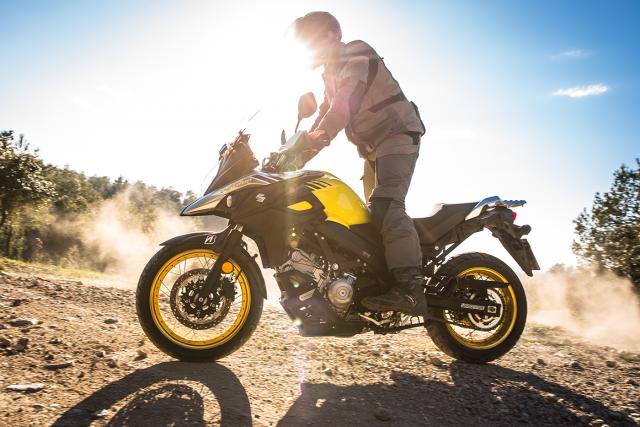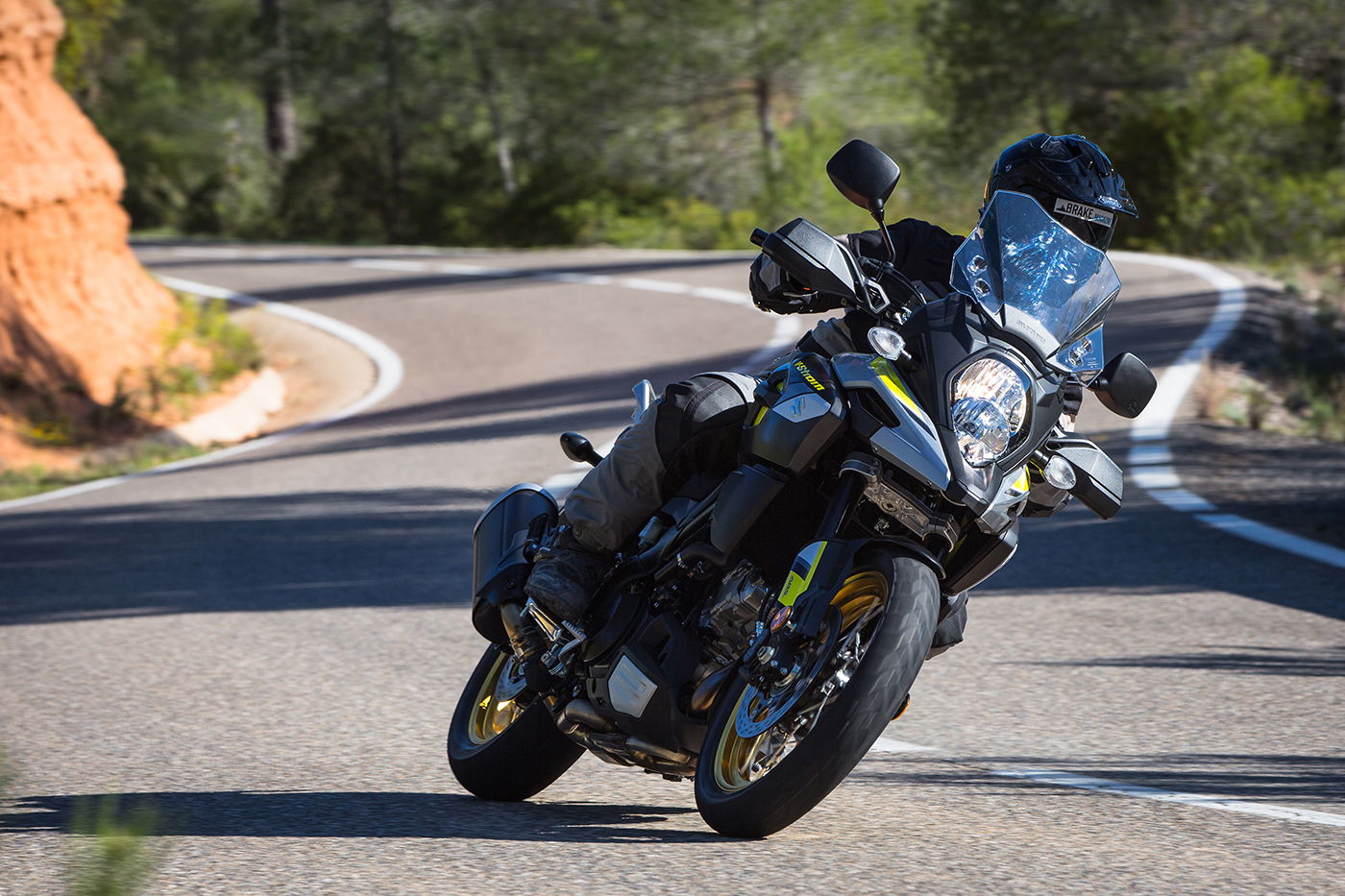First ride: Yamaha XSR900 Abarth review
Café racer styling. 115hp. Speed blocks. What’s not to like?

YAMAHA'S MT-09 is a great naked bike - lightweight with a very nice spread of torque and power from its three-cylinder engine. That's a given.
It follows that the XSR900, an MT-09 under the skin, is a very good bike dressed up in what Yamaha calls ‘neo-retro’ styling.
By the same logic, the limited-edition XSR900 Abarth should be a very good café racer.
It's a collaboration between Yamaha and car maker Abarth. Hence the name.
A run of 695 are to be made, each with its own number engraved on a plaque attached to the diamond-type aluminium frame.
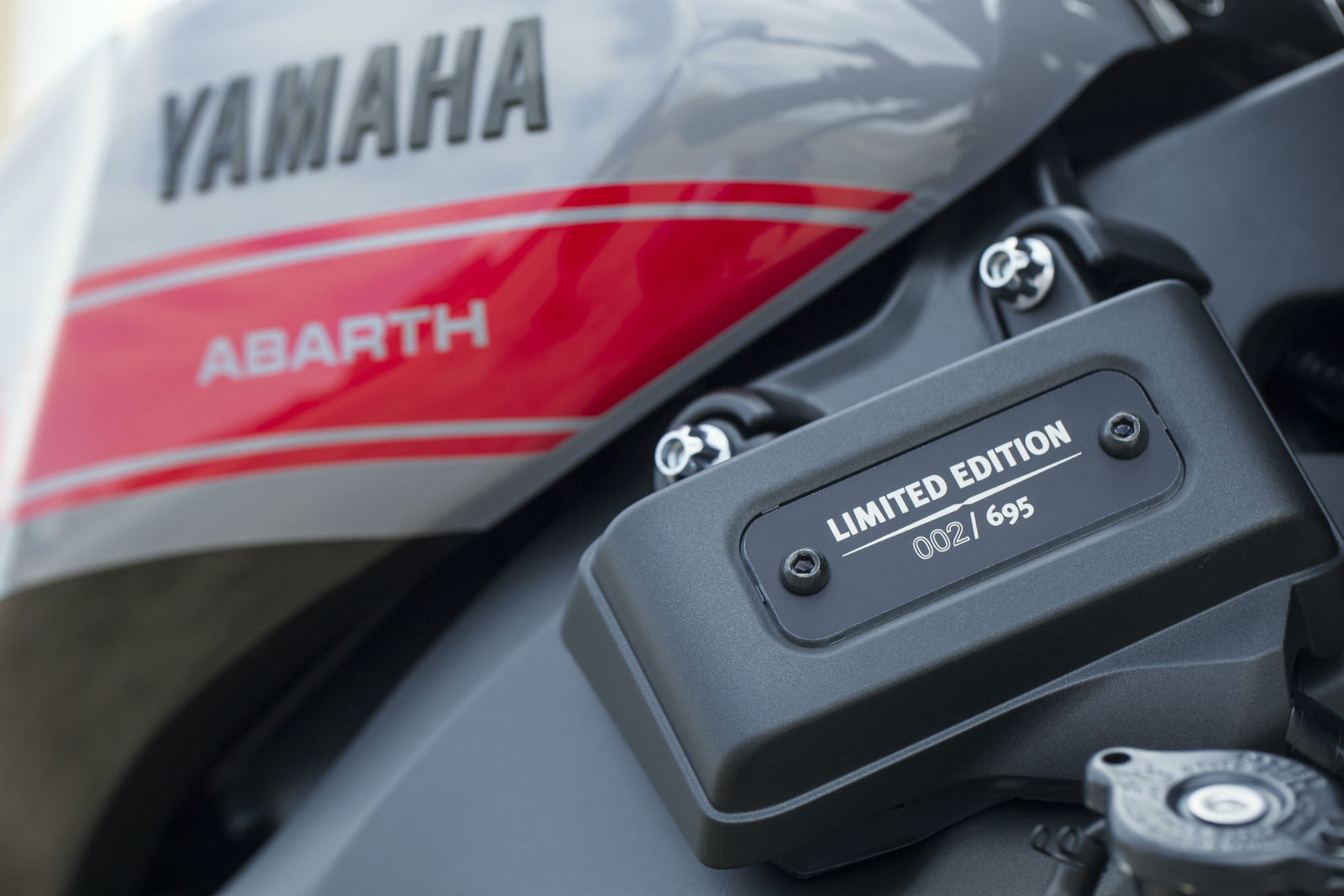
Only 100 are coming to the UK and about 50 have already been reserved, according to Yamaha.
To transform it into the special-edition Abarth, the XSR900 has been given a carbon-fibre body kit, including a single-seat tail unit which tapers around a round tail light, making it look a bit like an afterburner.

At the other end is a carbon handlebar fairing very similar to the one on Yamaha’s now-discontinued XJR1300 Racer.
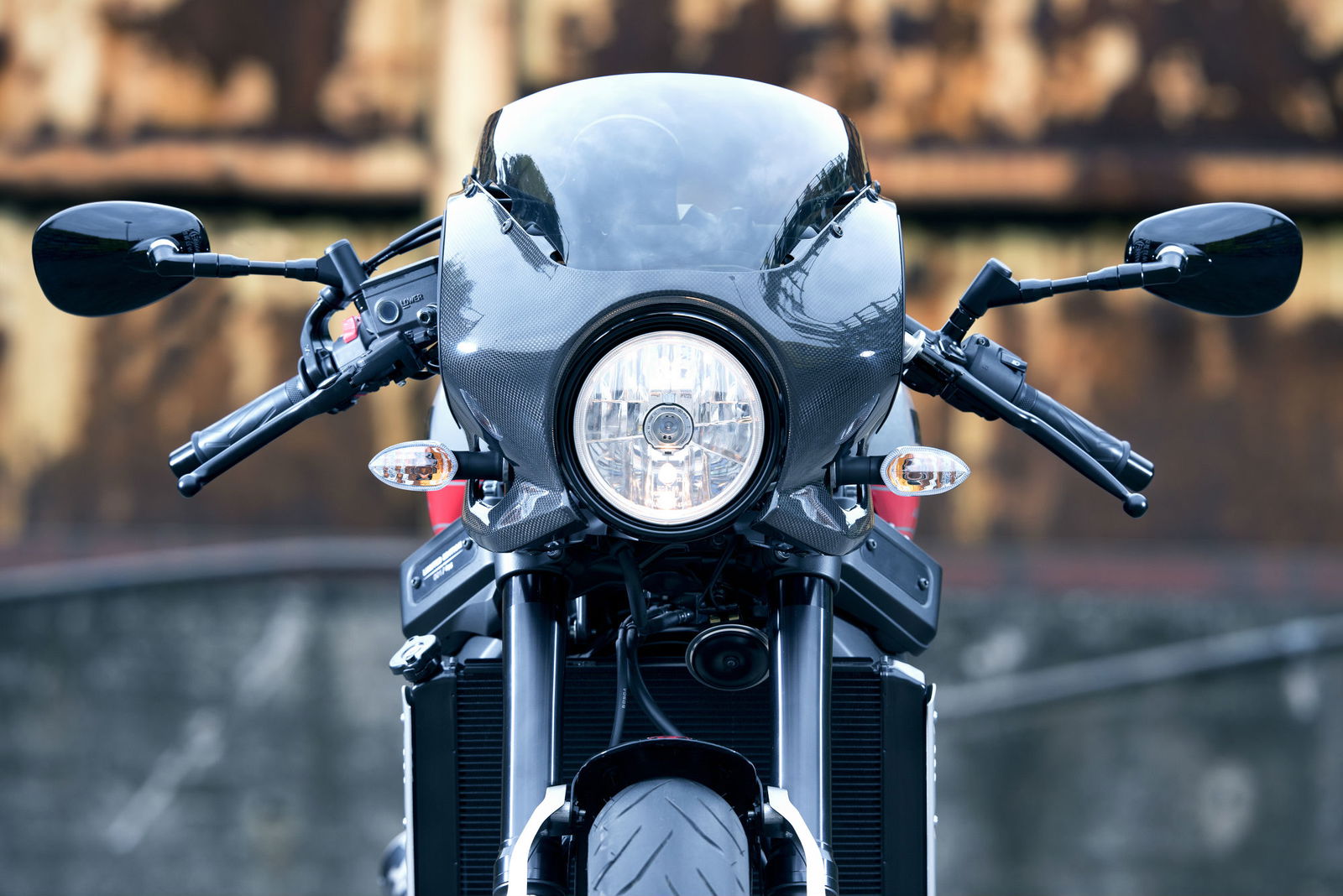
In fact, aside from the engine, the whole bike is reminiscent of the XJR1300 Racer, with quite an extreme riding position courtesy of the swallowtail handlebar, another special feature. The bars are slung very low.
The exhaust is new Akrapovič full system with stacked twin silencers.
And there are lots of special styling features, including a stitched suede seat with waterproof membrane, and special grey/red paintwork on the aluminium tank covers featuring Yamaha speed blocks. Which obviously all Yamahas should have.
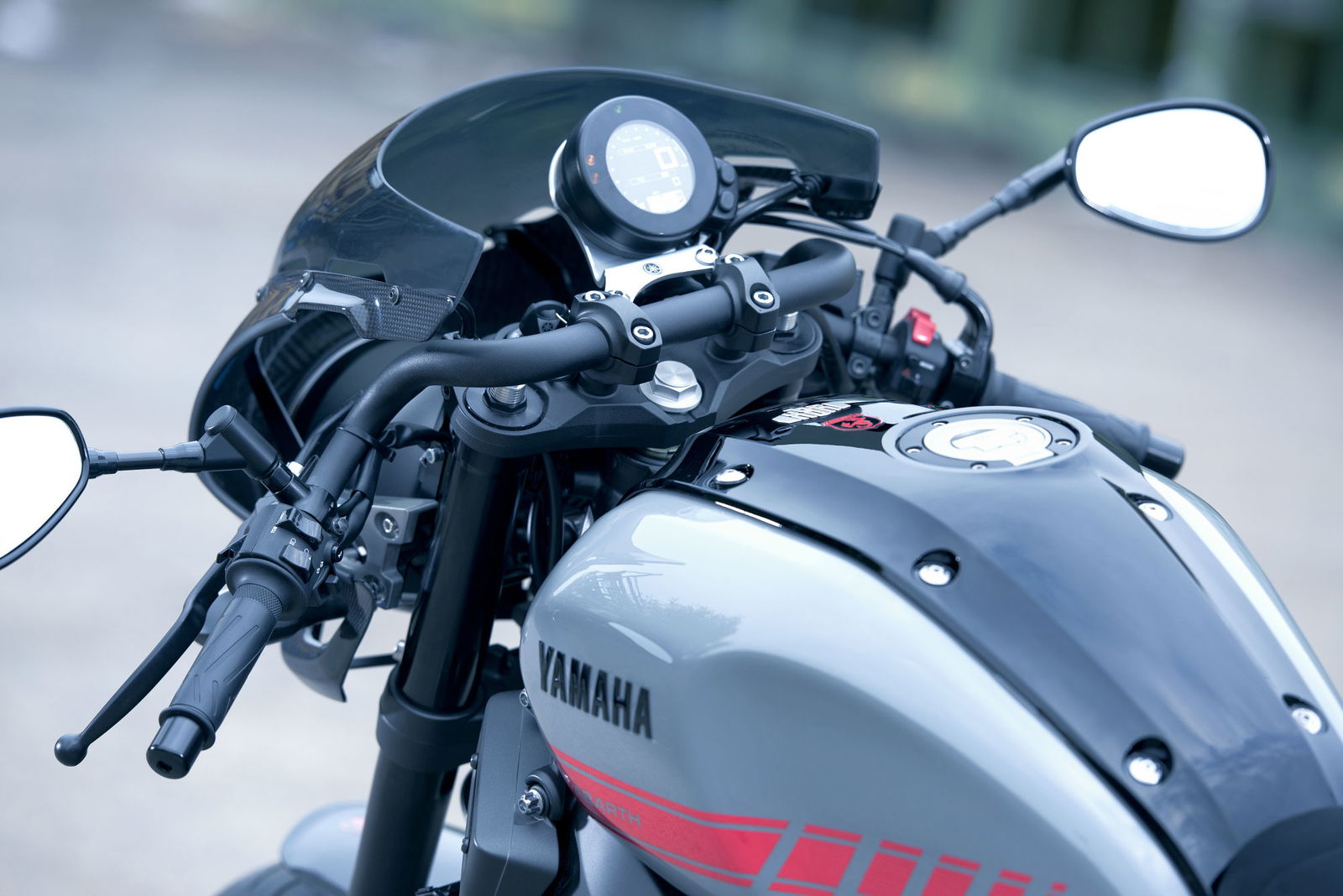

The platform, including frame, engine, suspension wheels and brakes, is the same as the XSR900’s. That means it also benefits from XSR’s rider aids, consisting of traction control with three intervention levels including off, plus three riding modes altering the aggression of the throttle response. And of course ABS.
It is, truth be told, roughly 80% styling exercise. The other 20% - the bit you’ll notice when you’re on it – lies in the new riding position and the different exhaust note from the Akrapovič system.
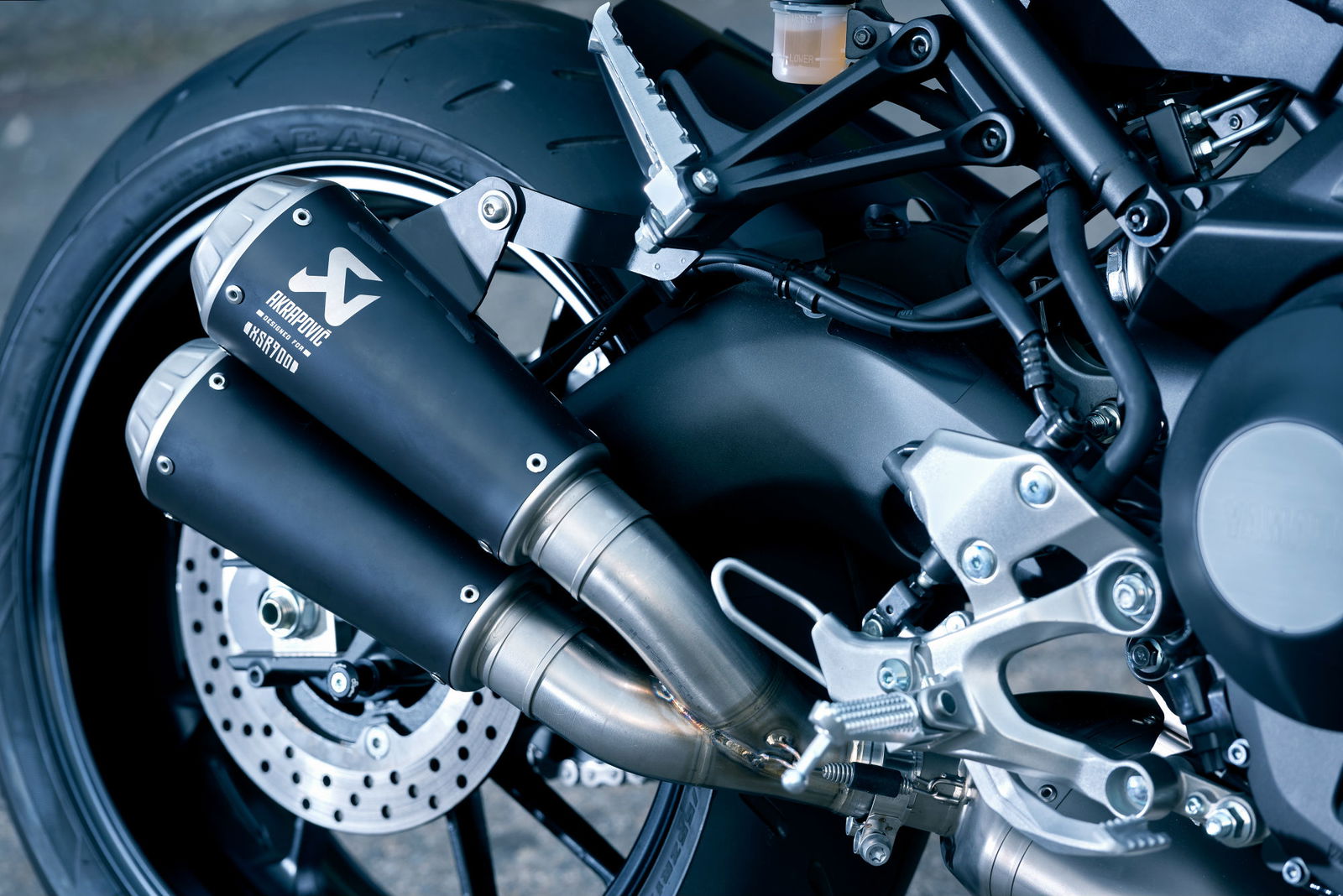
But even without technical upgrades, the XSR platform is enough to make this Abarth special the ‘most effective and powerful café racer on the market’ according to Yamaha.
It’s probably the most powerful, with a claimed 115hp from the 847cc triple. BMW’s 1170cc boxer-engined R nineT Racer makes 110hp while the figure for Triumph’s 1200cc parallel-twin Thruxton R is 97hp.
I wouldn’t argue with its effectiveness either. I could never tire of an MT-09 engine. Every time I experience it, I find I’ve forgotten how good it is.
The torque starts from right at the bottom of the range. You barely need to change down for any but the slowest of corners. Just leave it third.
You may end up taking one more slowly than you anticipated and thinking ‘I should have changed down for that’, but when you open the throttle you discover there was no need after all. There’s still plenty of drive.
And the initial throttle response is so smooth that it’s easy to feed it in seamlessly from low revs through the turn and out of it.
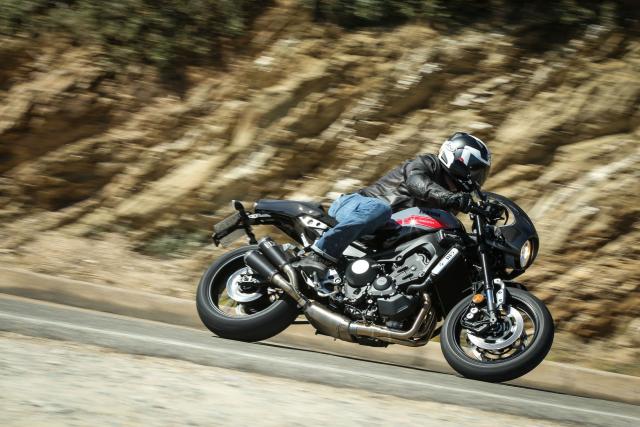
The first MT-09, in 2013, was accused by some of having a snatchy throttle response but that is long gone, fixed in a round of updates for 2016.
I haven't even got to the best part of this engine. It’s not the bottom-end. It’s the mid-range and top-end that follows, like a cake that you eat and then find in the cupboard and then eat again. Twice.
It just builds and builds and then takes off, as revvy and smooth as a four-inline but with the mid-range and bottom-end of a twin. This is why, some say, the triple is the greatest of engine configurations, delivering the best of all worlds. This one does it as good as any.
The new riding position and attitude of this Abarth special does alter the complexion of it from the rider’s seat.
It’s more prone than typical of even sports bikes, almost the position Superman adopts to fly, just as on the XJR1300 Racer.
When you’re in that position, there’s only one thing to do: go fast. And that’s what you do, from the moment you start the engine to the moment you park, fingers numb with pins and needles which you hadn’t noticed because you were too busy riding.
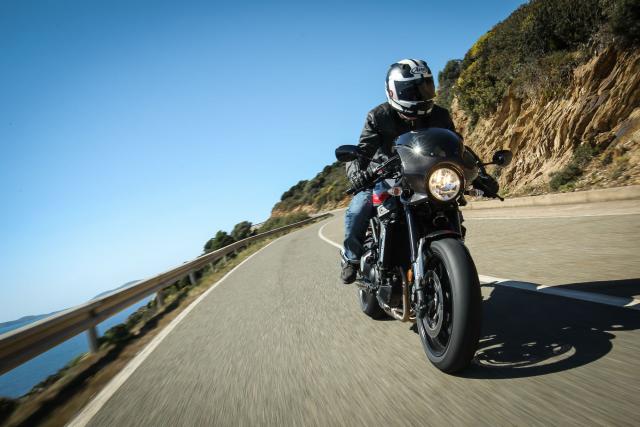
One thing it doesn’t share with the MT-09 is a quick-shifter, which is a shame. The MT-09 got one for 2017 but it hasn’t filtered down to the XSR yet. I tried a clutch-less up-shift and the gear selector didn’t move. It’s a feature which enhances the MT-09 engine and would sit well on this café racer.
There are some elements that perhaps might have benefitted from either upgrading or just changing. The MT-09’s suspension feels fine, on the MT-09. On the XSR900 Abarth, with more weight going through your arms to the bars and forks, it feels softer. The position, and maybe the expectation of sportiness that comes with it, slightly alters the feel and perception of it, so you’re aware of the front diving as you brake hard.
An Öhlins shock and fork cartridges are available as an optional extra on both this and the base-model XSR. Perhaps putting them on this as standard would have made it seem as special in performance as in styling terms.
The twin four-pot front calipers can brake hard. They don’t have quite the aggressive bite of the radial-mounted Brembo monoblocs on the original R nineT but there’s enough easy power and progression to rapidly decelerate with the deployment of one finger.

The dash is another thing I might change. Riding modes and traction control levels are lot to fit into a single round digital display. It looks nice, but you have to look down, away from the road, to see it. It made it distracting to change mode on the fly.

It’s probably the most powerful café racer on the market. It might be the fastest. Is it the most effective?
The engine of the Thruxton R has a more traditional, air-cooled feel (even though it's liquid-cooled), where the XSR900 Abarth’s feels modern.
Ultimately the answer will depend on what you think qualifies as ‘effective’ for a café racer.
Whatever, the XSR900 Abarth provides exhilarating performance with exceptional styling that will make it the centre of attention at whatever bike meet you rock up to on it.
At £9,999, it’s £1,700 more expensive than the XSR900 and £2,200 more than the MT-09. But it’s still £2,000 cheaper than the Thruxton R, £700 cheaper than the base-model Thruxton and £775 cheaper than the R nineT Racer. Café racers are not for penny-pinchers.
As an Abarth collaboration, with a corresponding car in the Abarth 695 XSR, it could even become collectable.
Hurry. Fifty left.
Model tested: Yamaha XSR900 Abarth
Price: £9,999
Specifications straight from Yamaha
ENGINE
Engine type: liquid-cooled, DOHC, 4-stroke, 4-valves, 3-Cylinder
Displacement: 847 cm³
Bore x stroke: 78.0 mm x 59.1 mm
Compression ratio: 11.5 : 1
Maximum power: 84.6 kW (115PS) @ 10,000 rpm
Maximum torque: 87.5 Nm (8.9 kg-m) @ 8,500 rpm
Lubrication system: Wet sump
Clutch type: Wet, Multiple Disc
Carburettor: Fuel Injection
Ignition system: TCI
Starter system: Electric
Transmission system: Constant Mesh, 6-speed
Final transmission: Chain
Fuel consumption: 5.2 l/100km CO2 emission 120 g/km
CHASSIS
Frame: Diamond
Front suspension system: Telescopic forks
Front travel: 137 mm
Caster Angle: 25º
Trail: 103 mm
Rear suspension system: Swingarm, (Link type suspension)
Rear travel: 130 mm
Front brake: Hydraulic dual disc, Ø 298 mm
Rear brake: Hydraulic single disc, Ø 245 mm
Brake system: ABS
Front tyre: 120/70ZR17M/C (58W) (Tubeless)
Rear tyre: 180/55ZR17M/C (73W) (Tubeless)
DIMENSIONS
Overall length: 2,075 mm
Overall width: 815 mm
Overall height: 1,140 mm
Seat height: 830 mm
Wheel base: 1,440 mm
Minimum ground clearance: 135 mm
Wet weight (including full oil and fuel tank): 195 kg
Fuel tank capacity: 14 L
Oil tank capacity: 3.7 L
ADDITIONAL FEATURE(S)
Engine: Crossplane crankshaft technology
Emission standard: EU4 compliant
